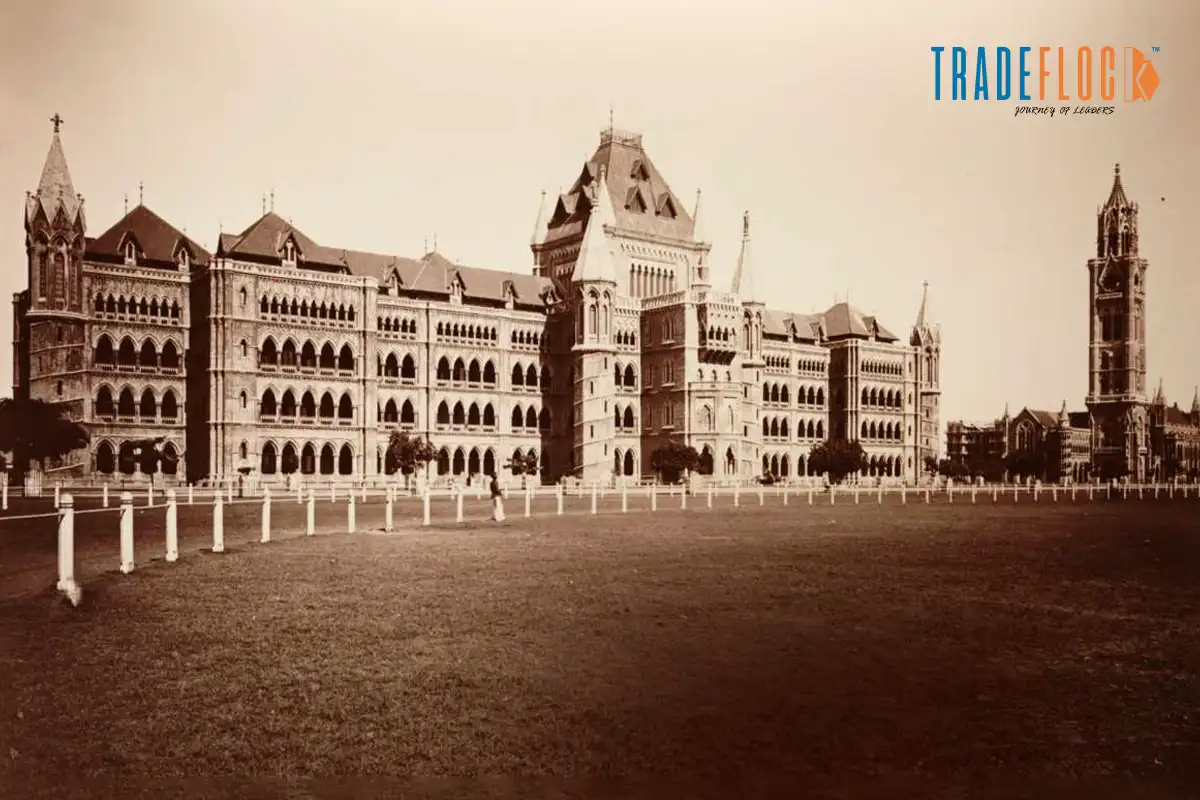The city of Bombay breathed softly with suspense on the morning of 14th August 1862. Heavy monsoon clouds draped the colonial skyline as carriages echoed through the lanes of Fort. Under the shadow of the newly inaugurated Bombay High Court, British officials, Indian advocates, and spectators assembled to mark a historic moment. More than just a ceremony under colonial rule, it represented the emergence of a judicial heritage destination to revolutionize India’s legal order and extend its influence far beyond imperial frontiers.
More than a mere opening of a court, it marked the official establishment of legal order, born from colonial origins but crucial to India’s democratic evolution. Beginning on a rain soaked morning it emerged a judicial journey unfolded that would guide revolutions, freedom, social transformation, and the rise of constitutional law. The Bombay High Court’s inception on 14 August 1862 marked the commencement of modern judicial governance in colonial India.
Table of Contents
Historical Overview: Legal Framework Before 1862
The significance of the Bombay High Court becomes clear when viewed against the backdrop of prior legal disorder. Before the mid-19th century, India’s judiciary was a confusing mix of Mughal-era regulations, Company courts, personal laws, and inconsistent colonial rules. The British East India Company’s provincial courts, staffed by largely untrained civil servants, delivered uneven justice.
The Supreme Court of Judicature, established in Bombay in 1823, was the forerunner of the High Court but had restricted jurisdiction and often conflicted with indigenous courts and Company laws. This issue caused inconsistent judgments, inefficiency, and discontent among both Indians and Europeans, underscoring the pressing need for judicial reform.
The Indian High Courts Act of 1861, enacted by the British Parliament, was a pivotal statute that instituted High Courts in Calcutta, Bombay, and Madras. Superseding the former Supreme Courts and Sadar Adalats, it sought to consolidate and rationalize the judicial framework by merging British and indigenous legal principles across the presidencies.
Bodies And People Behind This Event
The Bombay High Court was officially established on 14 August 1862 through a royal charter issued by Queen Victoria. Originally situated in Admiralty House, it was relocated in 1878 to its renowned Gothic-style structure designed by James Augustus Fuller, reflecting the British aim to assert imperial dominance and durability.
The initial bench of the Bombay High Court included Chief Justice Matthew Richard Sausse, previously a judge of the Supreme Court of Bombay, and Justice Sir Joseph Arnould, acclaimed for his role in the Maharaja Libel Case and the Bahadur Shah Zafar trial. Other distinguished judges were Justice L.C. Jackson and Justice Robert P. Collier.
From its inception, the Bombay High Court stood out by combining British legal systems with Indian customs. Including both English and Indian judges, it gradually embraced the importance of regional languages in proceedings. Over time, leading Indian legal figures like Justice M.G. Ranade, Badruddin Tyabji, and Justice M.C. Chagla guided its jurisprudence toward a more inclusive and culturally grounded path.
Unveiling the Justice
Prior to the High Court’s formation, justice was uneven and partial. The Bombay High Court established a consistent system, supplanting arbitrary colonial decisions with enacted laws, offering citizens at least theoretically, a more reliable and clear legal framework. This was essential in a society fragmented by caste, religion, and social status.
Over time, the court empowered Indians, especially Bombay’s urban middle class, by providing a venue to challenge colonial rule, assert civil rights, and protect property. The growing influence of Indian lawyers advanced legal awareness and public discourse. Institutions like Government Law College, Mumbai (established 1855), trained generations of lawyers, many of whom emerged as national leaders.
As Bombay developed into a major commercial and industrial hub, the court was vital in settling business conflicts, upholding contracts, and protecting commercial interests. Its jurisdiction over maritime law, insolvency, and intellectual property drew Indian and European traders, fueling the economic advancement of western India.
It also created new professional groups like lawyers, clerks, interpreters, and judges, facilitating upward economic mobility for educated Indians. For many, a career in law offered a route to social and financial progress.
The High Court emerged as a center for nationalist thought, where numerous future freedom fighters such as Tilak, Gandhi, Ambedkar, and Jinnah launched their political journeys. It served as one of the rare platforms for Indians to openly oppose British authority through legal means. Pivotal cases involving sedition and press freedom frequently ignited public activism and opposition.
Conclusion: A Persistent Influence
As the Bombay High Court celebrates its 163rd anniversary in 2025, it symbolizes India’s journey in law and democracy. Despite persistent challenges, it continues to be a cornerstone of justice, fostering legal reform, economic growth, and civic consciousness.
Beyond its iconic architecture, the Court represents the lasting essence of the rule of law and the quest for justice in a pluralistic society.






